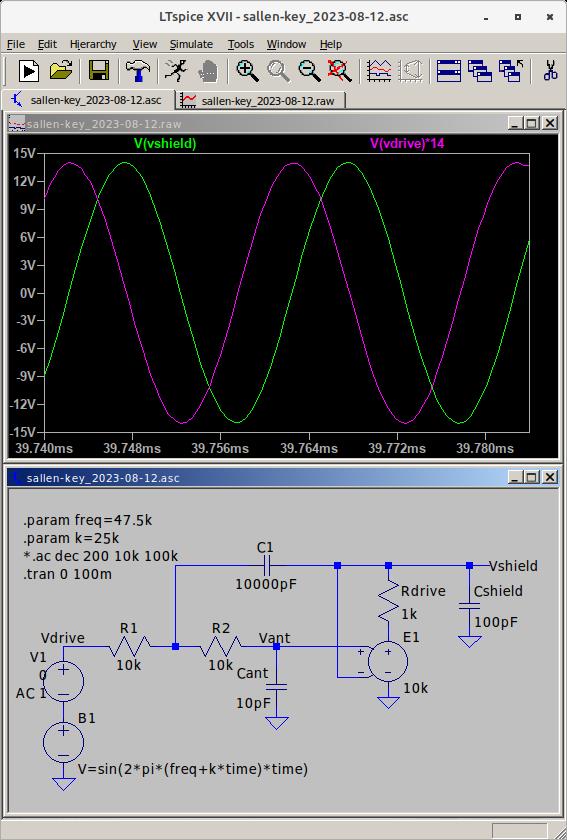Inductive Reasoning
Following up on the clever LCR / gyrator-based derivation of the Sallen-Key filter article I linked to here a while back: http://www.thereminworld.com/forums/T/28554?post=222796#222796
It's got me thinking there may be a way to replace the Theremin inductors with capacitors and op-amps, which would be something of a holy grail.
Consulting Don Lancaster's "Active Filter Cookbook" there are a couple of versions of the Sallen-Key low pass topology. One version is equal component value, where both resistors are equal, as are both capacitors, and Q is then controlled via the amplifier gain (gain = 3 - 1/Q). The other version is unity gain, with Q controlled via the capacitor ratios, specifically the larger feedback C is set to 4*(Q^2). This second version is most interesting because Q is fairly insensitive to variations in the smaller capacitor value, which also is conveniently referenced to ground. Anyway, I've been playing around with it some in LTSpice:

The Q here is sqrt(10000pF/10pF/4)=15. There is a very nice quadrature at resonance, so the D-Lev DPLL construct could be applied here too. It is *quite* sensitive to gain, even slight variations from 1 really kill the Q, so I'm using excess op-amp gain (10k here) knocked down via negative feedback to get a fairly precise gain of 1. The feedback is after Rdrive, a resistor that might be useful to reduce oscillation - unity gain feedback is the least stable for an op-amp, and driving C can also be problematic. The unity gain buffer output could be used directly for drive and antenna shielding too, something I'm burning to experiment with. Drive shielding might enable having the oscillators on the main PCB.
Operating point is 50kHz, which could be lowered by increasing R1 & R2, but that would introduce more thermal noise, not sure where the happy medium might be. The single pole roll-off of the op-amp open loop gain would certainly be a factor here. Might be interesting to run it at audio DAC rates and do the quadrature phase loop lock in software.
Clearly one would need sufficient VCC to accommodate the resonant peak. Drive amplitude would likely need to be reduced. I'm thinking R2R ladder here to supply drive phase directly, rather than via dither, though dither may still be required for input sampling. Lower Q would allow a lot of dithering actually.
Anyway, it looks promising in simulation and ticks a lot of design boxes, who knows yet if it is at all practical for Theremin electric field use.
Spice file: [LINK]
[EDIT] Also wanted to add that circuit currents in general are quite low too, which is good from a heating drift standpoint.



